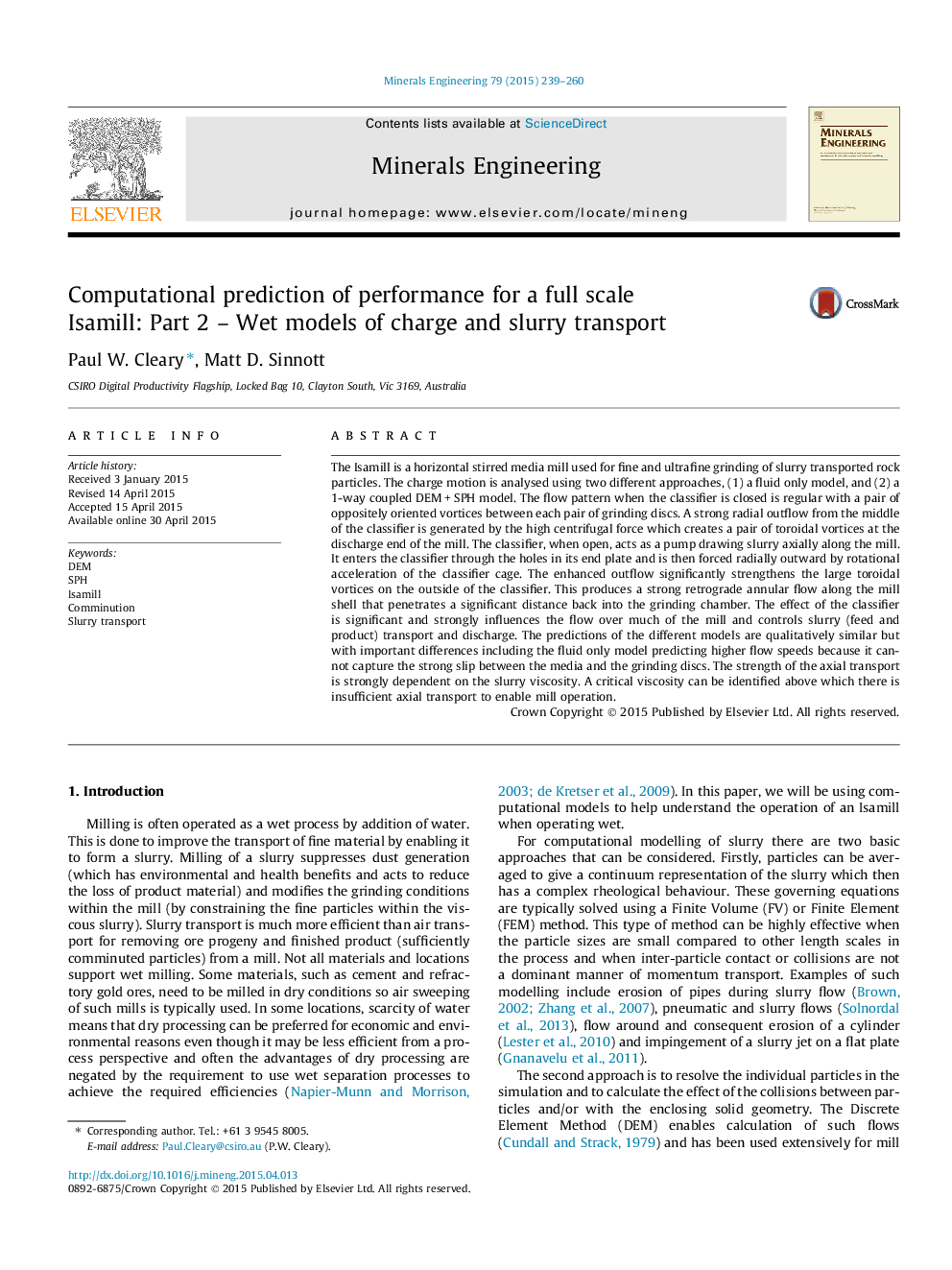| Article ID | Journal | Published Year | Pages | File Type |
|---|---|---|---|---|
| 232953 | Minerals Engineering | 2015 | 22 Pages |
•Charge motion is analysed using fluid only and 1-way coupled DEM + SPH models.•A pair of oppositely oriented vortices is generated between each pair of discs.•The classifier acts as a pump forcing slurry radially outwards.•The classifier generates a strong retrograde flow along the shell of the mill.•The fluid only model cannot capture the strong slip between the media and the discs.
The Isamill is a horizontal stirred media mill used for fine and ultrafine grinding of slurry transported rock particles. The charge motion is analysed using two different approaches, (1) a fluid only model, and (2) a 1-way coupled DEM + SPH model. The flow pattern when the classifier is closed is regular with a pair of oppositely oriented vortices between each pair of grinding discs. A strong radial outflow from the middle of the classifier is generated by the high centrifugal force which creates a pair of toroidal vortices at the discharge end of the mill. The classifier, when open, acts as a pump drawing slurry axially along the mill. It enters the classifier through the holes in its end plate and is then forced radially outward by rotational acceleration of the classifier cage. The enhanced outflow significantly strengthens the large toroidal vortices on the outside of the classifier. This produces a strong retrograde annular flow along the mill shell that penetrates a significant distance back into the grinding chamber. The effect of the classifier is significant and strongly influences the flow over much of the mill and controls slurry (feed and product) transport and discharge. The predictions of the different models are qualitatively similar but with important differences including the fluid only model predicting higher flow speeds because it cannot capture the strong slip between the media and the grinding discs. The strength of the axial transport is strongly dependent on the slurry viscosity. A critical viscosity can be identified above which there is insufficient axial transport to enable mill operation.
